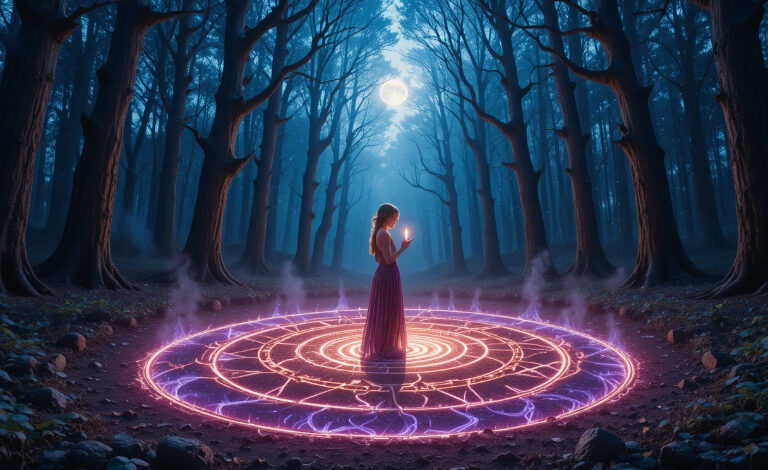
There’s something about a circle that just feels different. Even people who don’t practice magick can sense it — that quiet shift in the air, that feeling of stepping into “somewhere else.” Witches have known this forever. A circle doesn’t just mark space… it changes it. It turns normal ground into a living, breathing pocket of magick where energy listens more closely.
For generations, Witches across cultures have used circles to protect, to honor, to focus, and to create. A circle is a boundary, but it’s also a container — keeping out what doesn’t belong and holding in the energy you want to raise. It’s like stepping into a world where your intention has room to grow instead of leaking into the noise around you.
Some Circles are loose and simple, traced with the toe of a boot in the dirt, while others are measured down to the inch for big ceremonial work. But no matter how fancy or how humble, the Circle is one of the most important tools in Witchcraft. It’s a partner in your magick, not just a shape on the ground.
And honestly? There’s real comfort in that. When you step into your Circle, you’re stepping into a place where you’re held, supported, and protected. It’s one of the oldest forms of sacred space — and you’re carrying on a tradition that stretches back farther than memory.
The Sacred Circle: Everything You Should Know
Circles have always had a special place in Witchcraft. They’re ancient, powerful, and surprisingly practical. At their core, Circles are boundaries — but not the kind that push people away. Instead, they create a space where magick gathers, focuses, and obeys a little easier. Think of it like holding cupped hands around a candle flame so the wind doesn’t steal the light. The Circle keeps the energy steady.
Why Circles Matter in Witchcraft
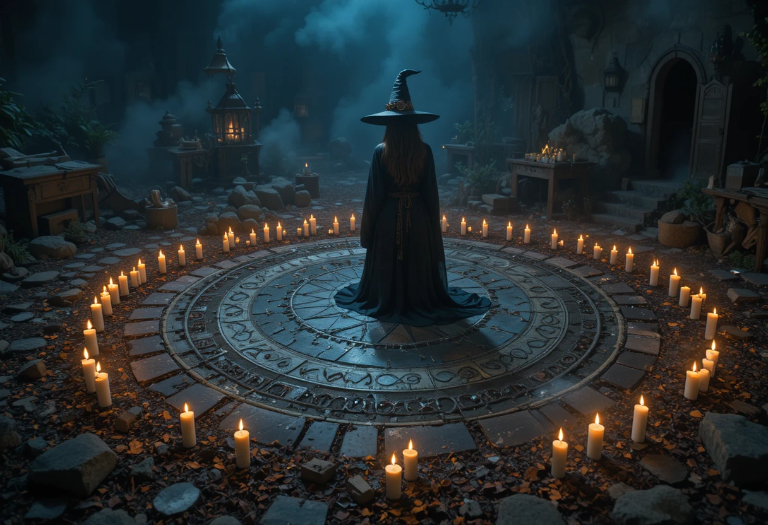
Throughout cultures and religions, Circles have been used to mark sacred ground. People knew intuitively that a circle meant “this is holy” or “this is a threshold.” For Witches, the Circle is the place where the mundane world softens, and your magick becomes sharper. Inside, energy doesn’t just float off — it builds, thickens, and becomes usable. When you cast a Circle, you’re basically saying, “Alright, world… give me a moment. I’m doing something important.”
Energy behaves differently inside a Circle. Your focus strengthens, distractions fall away, and the whole space acts like a container for whatever spell or ritual you’re about to do. Whether you’re calling the quarters, raising energy, or just meditating, the Circle helps hold everything in place.
Precision vs. Intuition

There are times when you need a perfect Circle — the kind measured with cords, marked carefully, and drawn with absolute accuracy. This is mostly during Ceremonial Magick. But everyday Witchcraft is more forgiving. Your Circle doesn’t need to be mathematically perfect. It just needs to be crafted with intention and care.
Still, it’s always a good idea to try your best. A cleanly drawn Circle keeps the energy smooth and balanced. Even if you don’t nail the geometry, the effort itself adds power. Witches have always worked with what they had — dirt floors, forest clearings, cramped bedrooms — and intention has kept Circles strong for centuries.
How Big Should Your Circle Be?
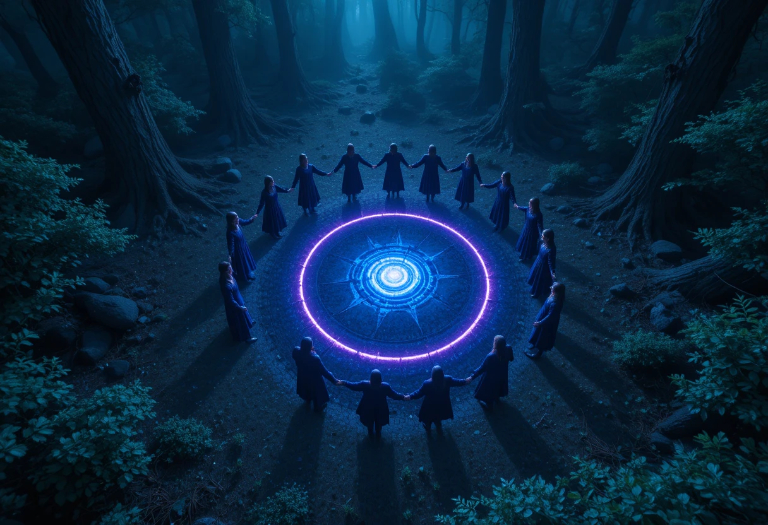
There’s no one-size-fits-all rule, but there are helpful guidelines:
-
A coven Circle is usually nine feet across
-
A solitary Witch’s Circle is often five feet across
But the real rule is comfort. The Circle should fit everyone without anyone bumping elbows or stepping over boundaries during movement or dancing. A good trick is this: everyone stands in a circle, holds hands, stretches their arms fully outward, and slowly steps back. Where your fingertips meet the space — that’s your ideal Circle.
Too small and the energy feels cramped.
Too big and the energy thins out.
You want that sweet spot where it feels contained but still breathable.
How to Draw the Circle
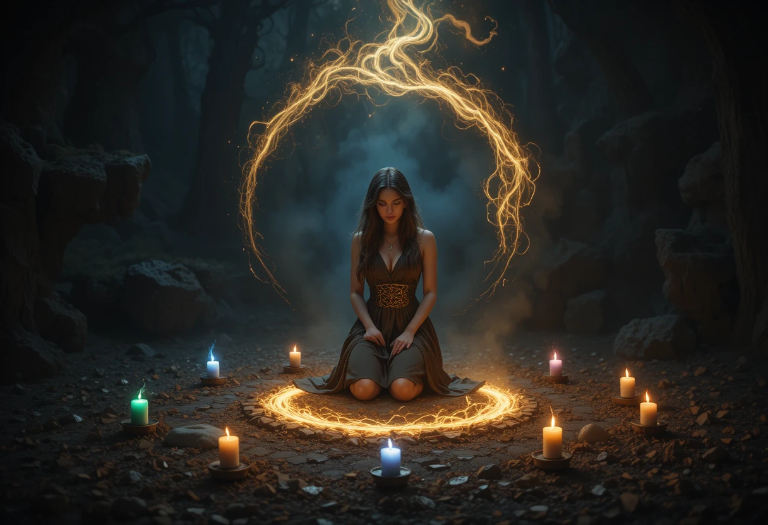
Every Circle begins the same way — in the east. This isn’t random. The east is the direction of dawn, new beginnings, breath, inspiration, and the spark of life. You always start there, and you always finish there.
Step 1: Marking the Space
-
Outdoors: Use the point of your sword (or athame) to trace the line directly into the ground.
-
Indoors: Use chalk, a cord, tape, or even a permanent Circle if you have a dedicated temple room.
This physical line becomes your boundary — a place where you’ll later send your energy.
Step 2: Charging the Circle
Once the marking is ready, the Priest or Priestess walks around it clockwise (never counterclockwise), feeding power into the Circle through the sword’s tip. This is where the Circle wakes up. You’re basically telling the space, “Stay strong. Hold what we bring into you.”
As they move, four unlit candles are placed directly on the Circle line:
-
North
-
East
-
South
-
West
They’re not for light — they’re for presence. They anchor the four directions.
If you want extra light, you can place other candles outside the Circle, just for ambiance.
Keeping the Circle Closed
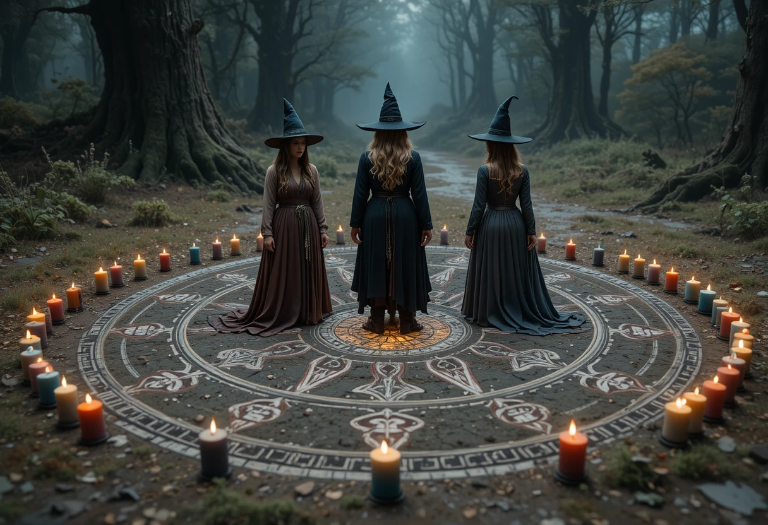
During magickal work, breaking the Circle is a huge no-no unless it’s absolutely necessary. The Circle is like a bubble — once you pop it, the energy spills out. That’s why you don’t casually step in and out. If someone must leave (bathroom emergencies, forgotten tools, sudden cat-related chaos), there’s a proper way to do it.
How to Exit the Circle
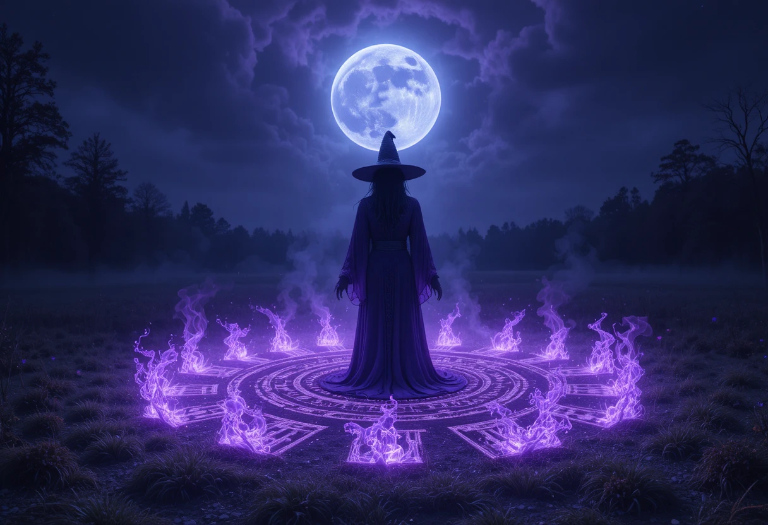
You always exit in the east.
-
Stand at the eastern edge with your athame.
-
Make a cutting motion from right to left across the Circle line.
-
Step out between those invisible parted lines.
-
If it helps, imagine a soft glowing doorway you’ve just carved open.
Some Witches prefer a more dramatic motion — up from the ground on one side, over the head, and down the other side — but that’s optional.
How to Re-Enter the Circle

You come back through the exact same doorway you created. After stepping inside, you must close it behind you.
Here’s where most people forget something important:
When you opened the Circle, you didn’t just cut the boundary once. You cut three layers:
-
The physical line
-
The line made with salted water
-
The line made with censing
So when you seal the break, you reconnect all three layers by simply moving your athame back and forth across the gap until it “feels” closed.
Sealing with a Pentagram

To fully seal it, raise your athame and draw a pentagram in the air:
-
Start at the top
-
Down to the bottom left
-
Across to the right
-
Straight across to the left
-
Down to the bottom right
-
Then back up to the top point
When you finish, kiss the blade.
This final touch tells the Circle, “We’re whole again.”
Why All of This Matters
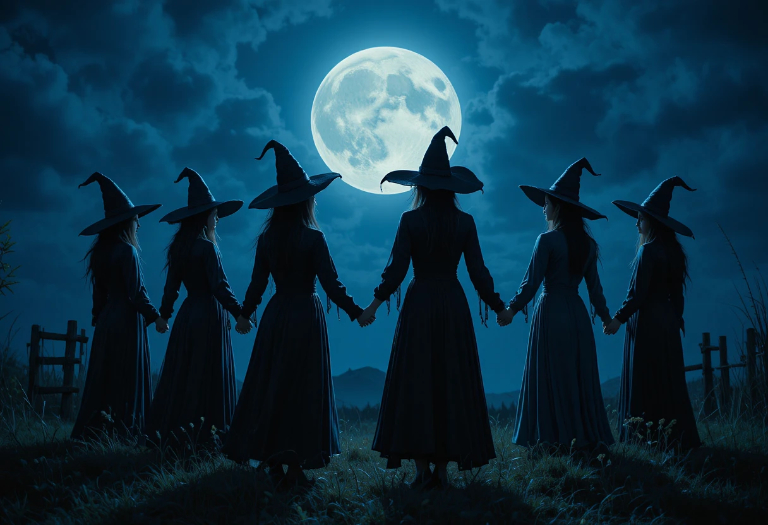
Casting a Circle isn’t just a step in some recipe. It’s a moment of grounding, of choosing to step into sacred space. Every motion — the direction you walk, the candles you set, the lines you draw — is part of a quiet conversation between you and the unseen. You’re shaping the energetic atmosphere, calling in protection, and preparing the space for magick that deserves to be held with care.
In a way, the Circle is an act of respect. You’re saying to your guides, your spirits, the elements, and even yourself: “I take this seriously.” And in return, they show up stronger.
Stepping Back Across the Boundary

When the Circle Opens Again
When the ritual is over and you finally open the Circle, there’s always that tiny shift — like the air sighs. The world comes back in slowly, and you step out feeling a little lighter, a little more connected, a little more magickal. Ending a Circle isn’t losing the energy; it’s releasing it gently back into the world to ripple outward.
Carrying the Sacred With You
The more you cast Circles, the more natural it becomes. Eventually, just drawing that first arc in the east makes your whole body remember what comes next. And honestly? That’s when you know you’re growing — when the Circle stops being a technique and becomes a familiar doorway to your own power.



